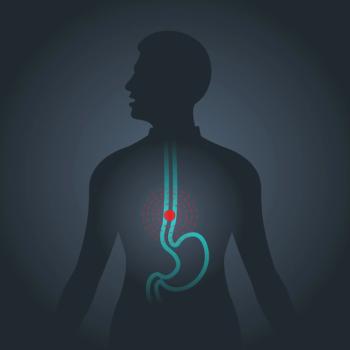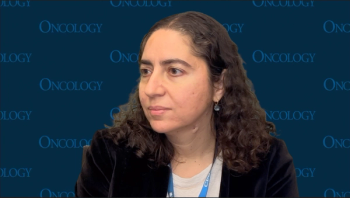
- ONCOLOGY Vol 22 No 11
- Volume 22
- Issue 11
Treating Localized Pancreatic Cancer: When and How?
Surgical resection offers the only potential cure for pancreatic adenocarcinoma. Unfortunately, while perioperative outcomes have improved dramatically in recent years, few patients present with tumors that are amenable to resection, and even after resection of apparently localized disease, long-term survival is poor.
Surgical resection offers the only potential cure for pancreatic adenocarcinoma. Unfortunately, while perioperative outcomes have improved dramatically in recent years, few patients present with tumors that are amenable to resection, and even after resection of apparently localized disease, long-term survival is poor. As many high-volume centers now have the capacity to perform these complex operations safely, it is increasingly important to identify effective adjuvant, neoadjuvant, locoregional, and systemic therapies if we are to achieve long-term success.
Dr. Duffy and O’Reilly provide an excellent review of the current role of systemic chemotherapy and radiation therapy in patients with localized pancreatic adenocarcinoma. Their article contains important information with regard to the definition of resectablility and outlines important information for providers treating these patients.
Defining Borderline-Resectable Disease
Determining resectability is critical in planning treatment for patients with seemingly localized pancreatic cancer. This allows optimal stage-specific therapy to be administered to patients and is critical to the creation of reproducible eligibility criteria for clinical trials. Paramount in the determination of a resectable patient is high-quality cross-sectional imaging in order to identify the relationship of the tumor relative to adjacent vital structures and to rule out metastatic disease. Patients with resectable disease should have a normal fat plane between the tumor and adjacent arterial structures and a patent superior mesenteric vein–portal vein (SMV-PV) confluence. In contrast, patients with locally advanced unresectable disease have tumor encasement of adjacent arteries or an occluded SMV-PV with no potential for venous reconstruction.
Borderline-resectable disease is an important but somewhat confusing concept. Here, the tumor extends to and abuts adjacent arteries or produces a short occlusion of the SMV-PV with the possibility for venous reconstruction. These anatomic criteria have been elucidated by the group at M.D. Anderson Cancer Center.[1] They have also gone on to expand the definition of borderline-although these further criteria are more controversial-to include those with questionable extrapancreatic metastatic disease and those with a marginal pretreatment performance status.[2]
I agree with the convincing argument outlined by these authors that a preoperative strategy in patients with borderline-resectable disease is appropriate. However, it is important to understand the reason for applying such an approach in order to select the best treatment modality. Patients with anatomically borderline disease due to tumor abutment can be considered particularly at high risk for margin-positive or incomplete resection. In contrast, those with an indeterminate liver lesion or peripancreatic adenopathy but otherwise locally resectable disease should be considered at high risk for finding metastatic disease at the time of surgery or for early distant failure.
While both groups might be considered good candidates for preoperative therapy, the approach may need to be quite different. In patients with anatomically borderline disease, the goal is to offer therapy that would increase the margin-negative (R0) rate. Here, consideration for preoperative chemoradiation therapy makes sense. In contrast, in patients with a risk of early distant failure, the goal might be to select those who are likely to fail early and avoid ineffective surgery. Here, one might favor the increased use of additional or more invasive staging (eg, laparoscopy) and perhaps preoperative combination chemotherapy without radiation therapy.
One concern when advocating neoadjuvant therapy in anatomically borderline patients is the limited radiologic responses that are typically seen. As with other tumor types, one might require a response as the goal of “converting” radiologically unresectable disease to a resectable status. In pancreatic cancer, however, this is often not the case. Therefore, one would need to postulate that the resectability and margin-negative rate can be increased even in those without an observed radiologic response. Interestingly, reports do suggest R0 rates can be improved even without radiologic response.[1,3] These tumors have fibrous components and associated desmoplastic stromal changes that may limit their ability to shrink. Yet, much remains speculative. Whether residual viable disease following neoadjuvant therapy is less frequently found at the periphery of tumors is not known.
Preoperative Therapy in the Resectable Patient
Most physicians advocate initial pancreatectomy followed by postoperative adjuvant therapy in patients with resectable disease who are candidates for surgery. Extending the rationale in borderline disease, preoperative therapy may also be advantageous in resectable disease. As discussed in this review, systemic treatment for micrometastatic disease can begin earlier and with improved tolerance when administered before surgery. More importantly, the use of neoadjuvant therapy could allow time to exclude those who develop early metastases before surgical intervention is undertaken.
In contradistinction to borderline cases, the rationale based on improving negative-margin status is more controversial. Here, one might expect comparable margin status, at least in experienced surgical hands. However, studies have shown that R0 resection rates are somewhat higher with preoperative chemoradiation than with initial surgical resection.[4,5] While this approach may likely become the standard in the future, it will likely require more effective systemic therapies and an improved understanding of the role of radiation therapy in this setting.
Consolidation Adjuvant Chemoradiotherapy: New Approach to Selecting the Right Biology?
Chemoradiation therapy has been used as the standard adjuvant treatment regimen for pancreatic cancer since early randomized trials more than 2 decades ago.[6] More recent randomized trials, particularly from Europe, have questioned the benefit of adding radiotherapy to the regimen.[7] While one can conclude that some form of adjuvant therapy is important, these conflicting results and lack of well-designed trials with regard to adjuvant chemoradiation have resulted in confusion as to how best to manage these patients.[8]
In this article, the authors review the controversy and discuss an emerging strategy that may ultimately resolve this question. While many patients develop distant recurrence early, local control remains an important goal in many patients. The use of postoperative chemotherapy prior to consolidation chemoradiation in resected patients may select patients who are most likely to benefit from a local treatment modality. Ongoing clinical trials are being designed to address this promising strategy of enriching the population of patients who receive regional adjuvant therapy.
Conclusions
Many questions remain with regard to the management of local pancreatic adenocarcinoma: are there benefits associated with preoperative vs postoperative therapy; biologic therapy vs no biologic therapy; radiation vs no radiation; initial vs consolidation therapy? Clinical trials are underway addressing many of these questions, and the treatment landscape will undoubtedly change dramatically in the next decade. In addition, predictive and prognostic markers will begin to play a role in personalizing treatment plans for pancreatic cancer patients in the future. One thing is clear-optimal patient care requires a multidisciplinary approach.
-Michael A. Choti, MD
References:
References
1. Varadhachary GR, Tamm EP, Abbruzzese JL, et al: Borderline resectable pancreatic cancer: Definitions, management, and role of preoperative therapy. Ann Surg Oncol 13:1035-1046, 2006.
2. Katz MH, Pisters PW, Evans DB, et al: Borderline resectable pancreatic cancer: The importance of this emerging stage of disease. J Am Coll Surg 206:833-846, 2008.
3. White R, Lee C, Anscher M, et al: Preoperative chemoradiation for patients with locally advanced adenocarcinoma of the pancreas.Ann Surg Oncol 6:38-45, 1999.
4. Pingpank JF, Hoffman JP, Ross EA, et al: Effect of preoperative chemoradiotherapy on surgical margin status of resected adenocarcinoma of the head of the pancreas. J Gastrointest Surg 5:121-130, 2001.
5. Evans DB, Varadhachary GR, Crane CH, et al: Preoperative gemcitabine-based chemoradiation for patients with resectable adenocarcinoma of the pancreatic head. J Clin Oncol 26:3496-3502, 2008.
6. Moertel CG, Frytak S, Hahn RG, et al: Therapy of locally unresectable pancreatic carcinoma: A randomized comparison of high dose (6000 rads) radiation alone, moderate dose radiation (4000 rads + 5-fluorouracil), and high dose radiation + 5-fluorouracil: The Gastrointestinal Tumor Study Group. Cancer 48:1705-1710, 1981.
7. Neoptolemos JP, Stocken DD, Friess H, et al: A randomized trial of chemoradiotherapy and chemotherapy after resection of pancreatic cancer. N Engl J Med 350:1200â1210, 2004.
8. Choti MA: Adjuvant therapy for pancreatic cancer-the debate continues. N Engl J Med 350:1249-1251, 2004.
Articles in this issue
about 17 years ago
Challenges on the Road to Treatment Advances for Pancreatic Cancerabout 17 years ago
Severe Stress More Common Among Long-Term Cancer Survivors, Study Showsabout 17 years ago
Milk Thistleabout 17 years ago
What Is the Optimal Treatment of Localized Pancreatic Adenocarcinoma?Newsletter
Stay up to date on recent advances in the multidisciplinary approach to cancer.


















































































